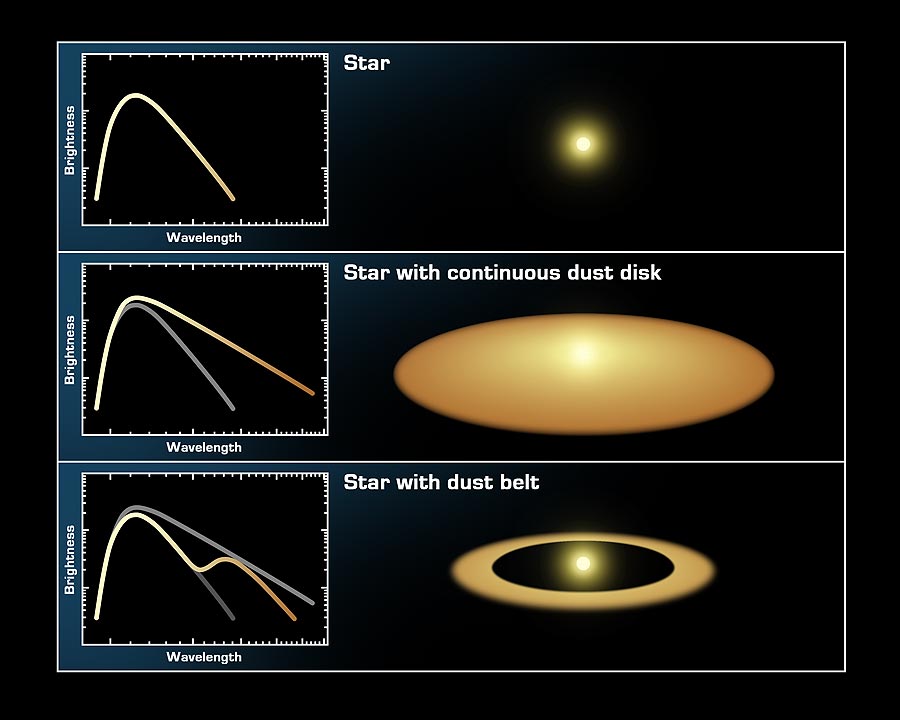![[Galactic center star orbit around black hole]](gal_center_s2_bh_orbit.jpg)
![[Galactic center star orbit around black hole]](gal_center_s2_bh_orbit.jpg)
![[b68 optical and ir]](bok_glob_vis_nir_edit.jpg)
The visual extinction through the cloud as a function of radius. This probes the density of the gas in the cloud, which matches theoretical models of a cloud that is supported only by gas pressure, not by magnetic fields or turbulence:
![[barnard 68 density profile]](barnard_68_bonnor_ebert.jpg)
A disk around a somewhat older star, HR 4796. This image was made at the Keck telescope, at wavelengths of 12 and 20 microns.
![[Image of hrboth.gif]](hrboth.gif)
The separate 12 (left) and 20 (right) micron images of HR 4796. Notice that the (cold) disk only shows up at the longer wavelength. Interestingly, the disk does not appear brighter in the middle even though it should be hotter there. This suggests that there may be a hole in the middle of the disk, perhaps cleared by planets. The hole would not be resolved in this image.
![[Image of hr4796_2panel.jpg]](hr4796_2panel.jpg)
The HR 4796 disk seen with the Hubble Space Telescope:
![[Image of NICMOS_MERLIN.gif]](hr_nicmos_small.jpg)
An artist's conception of the ring:
![[hr cartoon]](hr_cartoon.jpg)

IRAS found "ultraluminous infrared galaxies", which emit up to 10 times more energy in the IR than in the optical:
An HST picture in the near-IR shows the colliding nuclei in the galaxy...
![[arp220 hst big]](arp220_hst_big.jpg)
... and an ISO spectrum shows that much of the emission is from molecular hydrogen:
![[arp200 spec]](arp200_spec.jpg)
Spectra of the three most distant quasars that are currently known. Note that there is no light in these spectra in the visible band (shortward of 7000 Angstroms)!
![[high-z qso spectra]](high-z_qso_spectra.gif)
Higher-quality spectrum of the most distant known quasar (as of June 2006), with a redshift of z=6.43.
![[high z=6.43 spectrum]](qso_z_6_43_spectrum.gif)